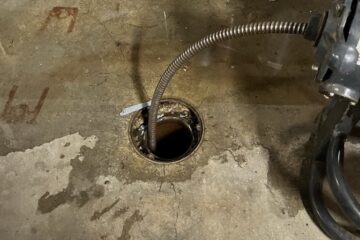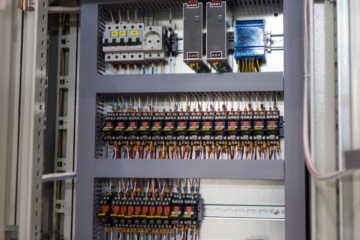Selecting the right generator for your home ensures reliable power during outages. Generac, a well-regarded name in home backup power solutions, offers two primary types of generators: standby and portable. Each type has advantages and considerations, making the decision dependent on your specific needs and preferences. We will explore the key factors to consider when choosing between a standby and a portable Generac home generator to help you make an informed choice.
Standby Generators: Overview and Benefits
Standby generators are permanently installed units that automatically provide power to your home during an outage. One significant advantage of a standby generator is its convenience. These generators are connected directly to your home’s electrical system, ensuring that power is restored almost immediately after an outage begins. This automatic transfer switch ensures the generator kicks in without manual intervention, providing seamless power to essential systems such as heating, cooling, and refrigeration.
Another benefit of standby generators is their capacity. These units are typically more extensive and powerful than portable generators, meaning they can simultaneously handle the electrical load of an entire home or large appliances. Additionally, standby generators are designed to operate for extended periods, making them suitable for long-duration outages. They are also housed in a protective enclosure, which safeguards them from weather conditions and reduces noise levels, making them ideal for residential areas.
Portable Generators: Flexibility and Considerations
Portable generators offer a different set of advantages. Unlike standby generators, portable units are not permanently installed and can be moved from one location to another. This mobility is ideal for those who need temporary power solutions for specific situations, such as camping trips, outdoor events, or emergency backup. Portable generators are generally more affordable and can provide sufficient power for essential appliances and tools, making them a practical choice for those with occasional power needs.
However, portable generators require manual setup and home electrical system connection. During an outage, start the generator, connect it to your home’s appliances using extension cords, and ensure proper ventilation to avoid carbon monoxide buildup. This process can be time-consuming and inconvenient compared to the automatic operation of a standby generator. Additionally, portable generators are typically less potent than standby units, which may limit their ability to support larger households or multiple appliances simultaneously.
Power Output and Usage Requirements
When deciding between a standby and portable generator, evaluating your power needs is essential. Standby generators usually have higher wattage capacities, simultaneously supporting multiple appliances and systems. This is particularly important for homes with high power demands or those that wish to maintain full functionality during an outage. A standby generator can power everything from HVAC systems to home offices, ensuring that daily activities continue without interruption.
Portable generators, however, have lower power outputs and are designed to handle fewer appliances. They are suitable for powering essential devices such as refrigerators, lights, and small electronics. A portable generator may be sufficient for those who require power only for a few critical devices or use the generator infrequently. It’s essential to calculate your power needs carefully and match them with the generator’s capacity to ensure you can meet your requirements effectively.
Installation and Maintenance Considerations
The installation process is significant when choosing between a standby and a portable generator. Standby generators typically require professional installation, including the setup of the automatic transfer switch and the connection to the home’s electrical system. This process can be more complex and costly but ensures that the generator is integrated seamlessly into your home’s power infrastructure.
Portable generators are more straightforward to set up, requiring only the placement of the unit and connection to appliances. However, they require regular maintenance and careful handling to ensure safe operation. This includes checking fuel levels and oil changes and ensuring that the generator is used in well-ventilated areas to prevent carbon monoxide buildup. Portable generators also require periodic maintenance to ensure long-term reliability and performance.
Cost and Investment Considerations
Cost is crucial when choosing between a standby and a portable generator. Standby generators involve a higher initial investment due to the cost of the unit itself and the installation process. However, this cost is offset by the convenience and reliability of automatic power restoration. Additionally, standby generators often have longer lifespans and lower long-term maintenance costs than portable units.
Portable generators are generally more affordable upfront and do not require professional installation. This lower initial cost makes them an attractive option for those with budget constraints or who only need occasional power backup. However, it’s essential to consider the potential costs of ongoing maintenance and fuel, which can add up over time.
Safety and Environmental Considerations
Safety is a critical factor when using any generator. Standby generators are designed with safety features such as automatic shutoff systems and weather-resistant enclosures. They are also installed by local codes and regulations, reducing the risk of safety hazards.
Portable generators require more attention to safety, as improper use can lead to carbon monoxide poisoning or fire hazards. They should be operated outdoors and away from living areas to ensure proper ventilation. Additionally, users must be vigilant about maintaining the generator and following safety guidelines to avoid accidents.
Choosing between a standby and portable Generac home generator depends on your power needs, budget, and preferences. Standby generators offer automatic, seamless power restoration and are suited for those who want a reliable, long-term solution for home backup power. Portable generators are flexible and affordable, making them ideal for temporary power and occasional use. By considering factors such as power output, installation, maintenance, and safety, you can make an informed decision that aligns with your requirements and ensures reliable power during outages.




